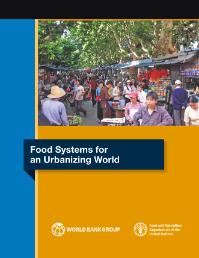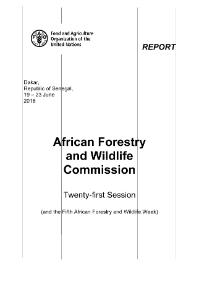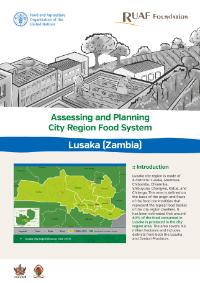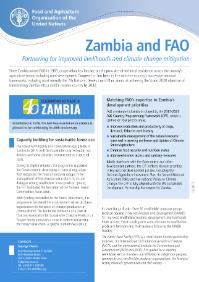Community land and natural resources lie at the heart of social, political and economic life in much of rural Africa. While the Zambian government acknowledges customary tenure, it has not established required legislation needed to secure it and support to communities in their efforts to protect…
Food Systems for an Urbanizing World is a joint report prepared by the World Bank and FAO. It aims to stimulate discussion and suggest pathways to support local and national governments, and civil society and private sector actors in their efforts to improve the performance and capacity of food…
From the outset, the development of agriculture has been strongly associated with women’s endeavour. In fact, women’s contribution to agriculture goes back to the origins of farming and the domestication of animals when the first human settlements were established more than 6 000 years ago.…
Ce numéro de Nature &Faune explore la science etles innovations (techniques,sociales et politiques) quipeuvent soutenir la réalisationde ce rêve africain. Les articlespartagent des expériences surles défis, les opportunités et larestauration réussie, y comprisla régénération…
Pour la première fois, les besoins et les opportunités de restauration des terres dans le cadre de la Grande Muraille Verte africaine ont été cartographiés et quantifiés afin de promouvoir les actions visant à renforcer la résilience des populations et de ces paysages confrontés au changement…
This brochure presents FAO’s work on mainstreaming biodiversity as a cross-cutting theme in the agriculture, fisheries and forestry sectors. It provides examples of on-the-ground activities and highlights relevant international mechanisms. It shows how biodiversity and ecosystems benefit people…
This factsheet provides information on the general progress achieved through the City Region Food System project in areas such as food production and distribution, food consumption, food value chain, food waste and loss, as well as climate change adaptation.
The Miombo woodland is a vast African dryland forest ecosystem covering close to 2.7 million km2 across southern Africa (Angola, Democratic Republic of the Congo, Malawi, Mozambique, Tanzania, Zambia and Zimbabwe). The woodlands are characterized by the dominance of Brachystegia species, either…
Since Zambia joined FAO in 1965, cooperation has focused on the provision of technical assistance across the country’sagriculture sector, including rural development. Cooperation has been in line with the country’s successive nationalframeworks, including most recently the 7th National…
Damage to crops from wildlife interference is a common threat to food security among rural communities in or near Game Management Areas (GMAs) in Zambia. This study uses a two-stage model and cross-sectional data from a survey of 2769 households to determine the impact of land use planning on…













